Combinatorial diversity of Syk recruitment driven by its multivalent engagement with FcεRIγ
- PMID: 31216232
- PMCID: PMC6743456
- DOI: 10.1091/mbc.E18-11-0722
Combinatorial diversity of Syk recruitment driven by its multivalent engagement with FcεRIγ
Abstract
Syk/Zap70 family kinases are essential for signaling via multichain immune-recognition receptors such as tetrameric (αβγ2) FcεRI. Syk activation is generally attributed to cis binding of its tandem SH2 domains to dual phosphotyrosines within FcεRIγ-ITAMs (immunoreceptor tyrosine-based activation motifs). However, the mechanistic details of Syk docking on γ homodimers are unresolved. Here, we estimate that multivalent interactions for WT Syk improve cis-oriented binding by three orders of magnitude. We applied molecular dynamics (MD), hybrid MD/worm-like chain polymer modeling, and live cell imaging to evaluate relative binding and signaling output for all possible cis and trans Syk-FcεRIγ configurations. Syk binding is likely modulated during signaling by autophosphorylation on Y130 in interdomain A, since a Y130E phosphomimetic form of Syk is predicted to lead to reduced helicity of interdomain A and alter Syk's bias for cis binding. Experiments in reconstituted γ-KO cells, whose γ subunits are linked by disulfide bonds, as well as in cells expressing monomeric ITAM or hemITAM γ-chimeras, support model predictions that short distances between γ ITAM pairs are required for trans docking. We propose that the full range of docking configurations improves signaling efficiency by expanding the combinatorial possibilities for Syk recruitment, particularly under conditions of incomplete ITAM phosphorylation.
Figures
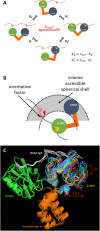
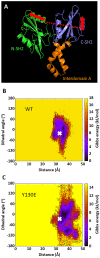


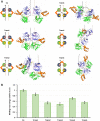

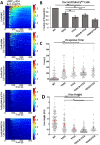
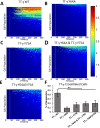
Similar articles
-
Differential mast cell outcomes are sensitive to FcεRI-Syk binding kinetics.Mol Biol Cell. 2017 Nov 7;28(23):3397-3414. doi: 10.1091/mbc.E17-06-0350. Epub 2017 Aug 30. Mol Biol Cell. 2017. PMID: 28855374 Free PMC article.
-
Protein tyrosine kinases Syk and ZAP-70 display distinct requirements for Src family kinases in immune response receptor signal transduction.J Immunol. 1997 Feb 15;158(4):1650-9. J Immunol. 1997. PMID: 9029101
-
Analysis of proteins binding to the ITAM motif of the beta-subunit of the high-affinity receptor for IgE (FcepsilonRI).J Recept Signal Transduct Res. 2007;27(1):67-81. doi: 10.1080/10799890601096686. J Recept Signal Transduct Res. 2007. PMID: 17365510
-
Protein tyrosine kinase Syk in mast cell signaling.Mol Immunol. 2002 Sep;38(16-18):1229-33. doi: 10.1016/s0161-5890(02)00068-8. Mol Immunol. 2002. PMID: 12217388 Review.
-
Structure and function of Syk protein-tyrosine kinase.J Biochem. 2001 Aug;130(2):177-86. doi: 10.1093/oxfordjournals.jbchem.a002970. J Biochem. 2001. PMID: 11481033 Review.
Cited by
-
Multiple Components Rapidly Screened from Perilla Leaves Attenuate Asthma Airway Inflammation by Synergistic Targeting on Syk.J Inflamm Res. 2020 Nov 13;13:897-911. doi: 10.2147/JIR.S281393. eCollection 2020. J Inflamm Res. 2020. PMID: 33223845 Free PMC article.
-
Spatial requirements for ITAM signaling in an intracellular natural killer cell model membrane.Biochim Biophys Acta Gen Subj. 2022 Nov;1866(11):130221. doi: 10.1016/j.bbagen.2022.130221. Epub 2022 Aug 3. Biochim Biophys Acta Gen Subj. 2022. PMID: 35933027 Free PMC article.
-
Podosome Nucleation Is Facilitated by Multivalent Interactions between Syk and ITAM-containing Membrane Complexes.J Immunol. 2024 Oct 1;213(7):988-997. doi: 10.4049/jimmunol.2400031. J Immunol. 2024. PMID: 39140892 Free PMC article.
-
Regulation of Trafficking and Signaling of the High Affinity IgE Receptor by FcεRIβ and the Potential Impact of FcεRIβ Splicing in Allergic Inflammation.Int J Mol Sci. 2022 Jan 12;23(2):788. doi: 10.3390/ijms23020788. Int J Mol Sci. 2022. PMID: 35054974 Free PMC article. Review.
-
Dephosphorylation accelerates the dissociation of ZAP70 from the T cell receptor.Proc Natl Acad Sci U S A. 2022 Mar 1;119(9):e2116815119. doi: 10.1073/pnas.2116815119. Proc Natl Acad Sci U S A. 2022. PMID: 35197288 Free PMC article.
References
-
- Abraham MJ, Murtola T, Schulz R, Páll S, Smith JC, Hess B, Lindahl E. (2015). GROMACS: high performance molecular simulations through multi-level parallelism from laptops to supercomputers. SoftwareX , 19–25.
-
- Aqvist J, Medina C, Samuelsson JE. (1994). A new method for predicting binding affinity in computer-aided drug design. Protein Eng , 385–391. - PubMed
-
- Åqvist J, Wennerström P, Nervall M, Bjelic S, Brandsdal BO. (2004). Molecular dynamics simulations of water and biomolecules with a Monte Carlo constant pressure algorithm. Chem Phys Lett , 288–294.
Publication types
MeSH terms
Substances
Grants and funding
LinkOut - more resources
Full Text Sources
Research Materials
Miscellaneous

